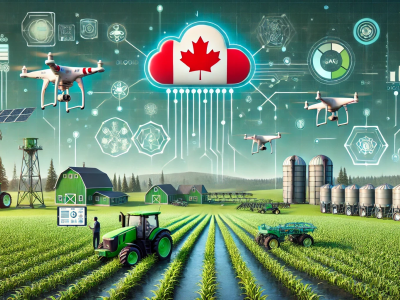Bioenergy the turning tide: Biomass emissions are not carbon neutral – we need to change how we account for them
In a guest post titled “Bioenergy ‘flaw’ under EU renewable target could raise emissions”, Sir John Beddington, the UK government’s chief scientific adviser between 2008 and 2013, raised the alarm that allowing trees to be harvested for the purpose of energy production results in much higher emissions than the equivalent energy produced by burning of fossil fuels. A recent MIT-led study quantified the impact of displacing coal with wood for power generation and demonstrated that use of wood will worsen climate change impacts. This is because of the time lag between the instantaneous CO2 release from combustion of wood and the decades of regrowth required with the carbon debt estimated to range between 44 to 104 years. In addition, there is a loss of future carbon sequestration from the growing trees that are cut down, a loss of soil carbon as a consequence of the disturbance and the difference in carbon emissions due to the processing efficiency of biomass being less than that of coal. In relation to natural gas, biomass combustion emits more than three times the greenhouse gases (GHG) on an equivalent energy basis.
Climate impacts will reverberate in developed countries
The European Union (EU), the British and U.S. governments’ claims of biomass being carbon neutral have resulted in a dramatic increase especially in the EU countries, of the use of both locally sourced wood and North American shipped wood pellets. For example, Sweden has more than doubled the use of forest fuels over the last 25 years. Biomass, predominately from the forest, accounts for 23% of Sweden’s energy supply. About 50% of the biomass is used for generation of electricity and district heat, about 34% is used by industry to generate process heat, about 10% is used as firewood in single family dwellings and about 6% is used for transportation fuels (ethanol, biodiesel).
In an open letter to the EU Parliament, scientists have expressed their great dismay regarding EU climate policy pointing out that carbon neutrality is a huge loophole and that wood burning has serious climate consequences. Since a significant amount of EU countries’ renewable energy comes from biomass burning, this translates into significant increase in their actual GHG emissions putting the implementation of the Paris agreement in jeopardy by countries failing to properly account for their climate emissions. Considering the example of Sweden, their use of forest fuels can be estimated to double their 2016 GHG reported emissions of 53 Mt/y CO2e.
According to the International Panel on Climate Change (IPCC), large scale use of bio-energy with carbon capture and storage (BECCS) is a promising option for negative emissions required for achieving the below 20C of the Paris Agreement. The arguments presented above and considering the cost and complexity of scaling-up CCS projects, makes BECCS an unjustifiable technology. A more promising pathway for carbon retention is to simply grow our forests. In the recently published Shell scenarios titled “Meeting the Goals of the Paris Agreement”, achieving the below 20C will require, among many other massive measures, achieving net-zero deforestation while an area the size of Brazil is being reforested.
From a lifecycle analysis viewpoint, it is important to separate the accounting for the use of forest fuels for energy which can dramatically increase emissions and carbon retention by forests given the lag time between the two pathways and the fact that, on a molecular scale there is no connection/cycle between these two pathways. The use of biomass for making biofuels that can substitute for fossil fuels is much less of a concern and the single pathway lifecycle analysis is generally appropriate. Nevertheless, clear guidance is required as to what constitutes a biofuel project that can reduce GHG emissions and ones that can exacerbate the problem. This will be a subject for a future blog.
From a Canadian perspective, there are 136 biomass burning facilities totaling 2.8 gigawatts and representing 1.9% of generation capacity in 2015. The majority of these facilities burn woodchips, wood pellets and sawdust. Up to now, Canada has also considered biomass a carbon neutral source and its mid-century strategy has called for growth in biomass generation of over 800% by 2050. Given that forestry biomass emissions are similar to that of coal, it would be prudent for Canada to re-consider its long-term strategy on the use of forest products for heat and power and include the increase in actual atmospheric emissions when submitting Canada’s national inventory report as required by the Paris Agreement.
Canada’s export of wood pellets is a growing enterprise that increased by 46% between 2015 and 2016 to reach 2.4 million tonnes making Canada the second largest wood pellet exporter after the U.S. About 70% of Canadian wood pellets in 2016 were destined to the U.K. market as part of the U.K.’s plan to phase out coal by 2025. A significant part of Canadian wood pellet production is from lumber mills’ wood residues and production wastes. Nevertheless, the pellets are not carbon neutral and they need to be subjected to similar GHG accounting that is required for harvested wood from the forest. Canadian companies that continue to make investments to further boost wood pellet production ought to be prepared for market downturn should proper GHG accounting come into effect.
The heat on the EU
Countries around the world are facing increased pressure to deliver a solid climate change commitment and act to reduce emissions. The EU countries being the largest users of forests for heat and power must face up to their false narrative on carbon neutrality of biomass burning and account for GHG emissions in a fair and transparent manner while acting to reduce actual atmospheric GHG emissions. This will send a signal to other countries that climate change is a serious issue that needs to be addressed and that ambitions and stringency can be intensified.


